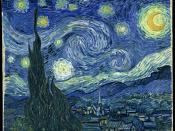Dr. Wade Berrettini, a professor of psychiatry at the University of Pennsylvania says, "the illness has a devastating effect on patients and their families."� Dr. Berrettini is talking about a mood disorder once known as manic depression. Today, more commonly known as bipolar, this disorder affects more than 2 million Americans and up to two-thirds of them are either undiagnosed or misdiagnosed (National Alliance for Research on Schizophrenia and Depression, 2000).
Bipolar is a mental disorder that involves episodes of severe mania ("natural high"�) to sadness and feelings of hopelessness (depression) and continues back and forth with some cycles of normal moods in between. Bipolar disorder can be diagnosed as early as adolescence and will continue throughout one's lifetime. This is often not recognized as a serious disorder, and the people who have it may go years suffering unnecessarily. This disorder is such a serious mood disorder that it affects one's ability to function in normal every day activities.
It can also affect one's work, family, and social life.
A person that seeks care from a psychiatrist, unknowingly with bipolar disorder will be in one of the two phases, either a "major low"� (depression) or showing some sign of a "high"� (manic). This would be the doctor's focus for the initial treatment. Most of these episodes will not require hospitalization, but there are times that partial hospitalization is needed to stabilize the patient on the medication. If the patient is suffering from a major depressive episode and threatening suicide that patient would have to be assessed and most likely would be placed on a 72-hour hold.
Maintaining medication over a long period of time is common and would result in a good diagnosis. If treatment is followed correctly most people can lead active and healthy lives with this...


